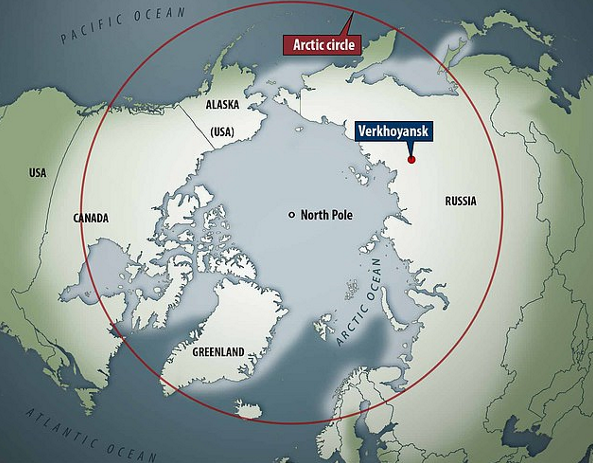-
As per WMO, Verkhoyansk, a Siberian town experienced the highest temperature of 38 C, the highest ever recorded temperature in the Arctic region.
-
This place falls in eastern Siberia, which has an extremely harsh dry continental climate (very cold winter and hot summer).
-
On February 6th 2020, at the Esperanza station in Argentina considered to be a part of the Antarctic region, a temperature of 18.3°C was recorded.
-
These events indicate that the region in and around both Arctic and Antarctic is being warmed gradually.
What is arctic circle?
All landmasses and seas north of 66.5° latitude are considered the Arctic region. The latitude itself is called the Arctic Circle.

What are the causes?
-
Global warming: Arctic region is warming at twice the rate than the rest of the world, mainly because of human-made greenhouse gas emissions.
-
The increased rate of warming is because of a phenomenon known as Arctic amplification.
-
Arctic amplification is the process in which the melting ice hastens the process of warming by exposing areas that are not good at reflecting back heat into the atmosphere.
-
This creates a cycle between melting ice and rising temperatures, amplifying the impact of warming.
How the climate of Arctic region is changing?
-
At the time the highest temperature was recorded, most of the Arctic region, especially Siberia, was experiencing an unprecedented heatwave, with temperatures in the Siberian Arctic rising up to 10°C above normal.
-
This has led to forest fires and massive sea ice loss and was one of the reasons for 2020 becoming one of the three warmest years on record despite a cooling La Niña phenomenon towards the end of the year.